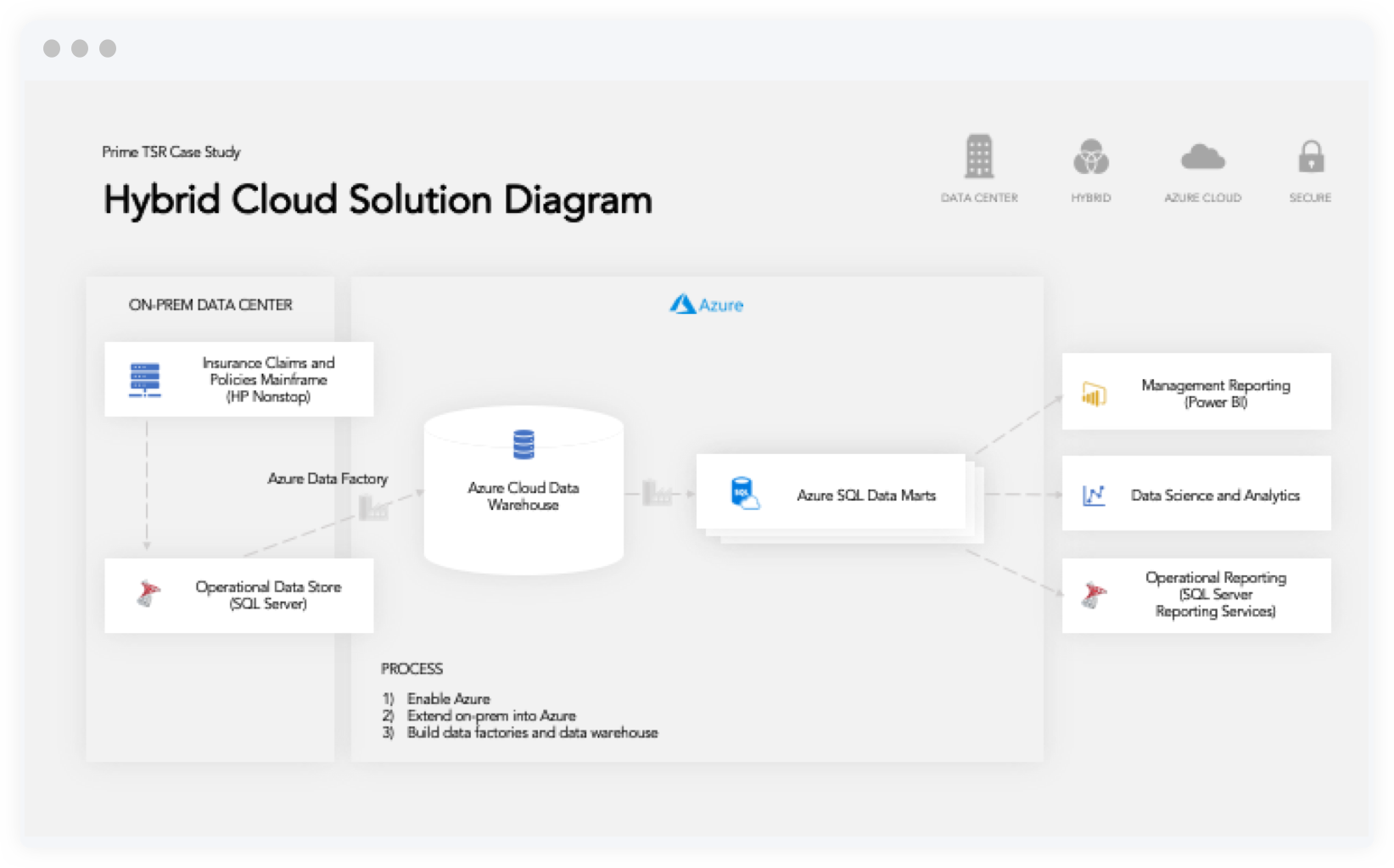What We Did
Data warehouse architecture
Infrastructure design
Hybrid cloud architecture
Serverless computing
Middleware implementation
Azure data warehouse
Mulesoft
Azure data factory
Azure SQL




Where Data Is the Difference
For Gallagher Bassett, business intelligence is not just a back-office solution, it’s their differentiator. Serving 4,800 organizations across various industries and managing claims in over 60 countries, Gallagher Bassett experts ensure that claimants have their injuries and issues addressed quickly and holistically.
To identify and deliver the right resources at the right time, internal users have to be backed by readily available and secure BI reporting tools.
To accelerate their mission for “better outcomes”, Gallagher Bassett came together with Prime TSR to operationalize an Azure data warehouse, enabling a cloud-native data ingestion pipeline and a hybrid cloud analytics platform.
Short Term Performance Tuning to Clear the Runway
As with most long term digital transformation projects, existing technology benefits from tactical performance tuning as a temporary measure and a quick win for the client team. In the case of Gallagher Bassett, this phase consisted of immediate improvements to time-sensitive data flow, which in turn, cleared the tarmac for the long term cloud data warehouse solution.


Using Non-functional Requirements to Define Guiding Principles
Working together with Gallagher Bassett’s operations leadership, our initial strategic assessment resulted in three key guiding principles. First and foremost, our mutual goal was data security in an environment where the cloud was never used before. Our emphasis was to meet strict data security and compliance requirements that protect sensitive claims and policy data.
With equal priority, we wanted to build for performance and scalability. The reason Gallagher Bassett wanted to invest in Azure cloud technology, was to take the data out of the mainframe so it can be processed at a frequency of hours, not days, and at a proportionate scale as their growing book of business.
Finally, we ensured operational readiness and accelerated knowledge transfer. From the very start of the project, we involved internal teams in performance testing and shadowed key stakeholders early and often to help adjust to Azure Cloud.


Creating a Cloud Environment
For Gallagher Bassett, establishing a cloud presence in addition to its robust legacy stack was important in order to improve reporting speed and access to existing data. Using Microsoft’s Azure Cloud Platform was an obvious choice because the organization was already equipped with a Microsoft developer stack and enterprise service agreements that made it a logical transition.
To make the transition to cloud possible, we had to go through a cloud provisioning and enablement process that would need to meet strict data security requirements and ensure that the internal operations team was ready to manage the new cloud environment.
During this phase of the process, our respective development teams worked together to build out the procedures for copying data from existing on-premise systems to Azure Cloud using Azure Data Factory; an integration service that orchestrates and automates the movement of data.

In preparing for the transition to the cloud, our cloud engineers also spent time scripting out the environments and building DevOps pipelines that ensured the platform is performing efficiently and free of human error.
Unprecedented Rapid-refresh
After six months of development and three months of support, we established a cloud presence and created a hybrid cloud solution that joined Gallagher Bassett’s on-premise data centers with Azure Cloud. We leveraged the Azure Data Warehouse as the main cloud platform and created data pipelines using the Azure Data Factory.
As a result, we enabled users to request information for thousands of claims and insurance policies at an unprecedented rapid refresh rate of 4 times per day, exposing the data for on-demand data consumption.
Without compromising SLAs, Gallagher Bassett saw major cost savings. The elasticity of the cloud dynamically increased or decreased the processing power depending on the demand for information and the volume of data flow.
To help Gallagher Bassett achieve their mission for “better outcomes”, we enabled the creation of analytical dashboards to improve decision making and created a four-hour refresh frequency to speed up response times.
rapid refresh rate improvement to a frequency of four times per day
decrease in SLA breaches
in savings for infrastructure investment by implementing a serverless cloud solution
